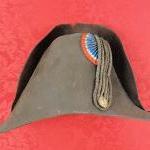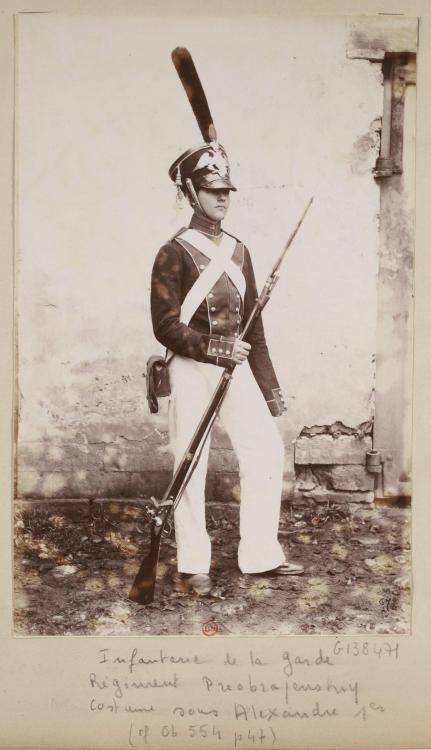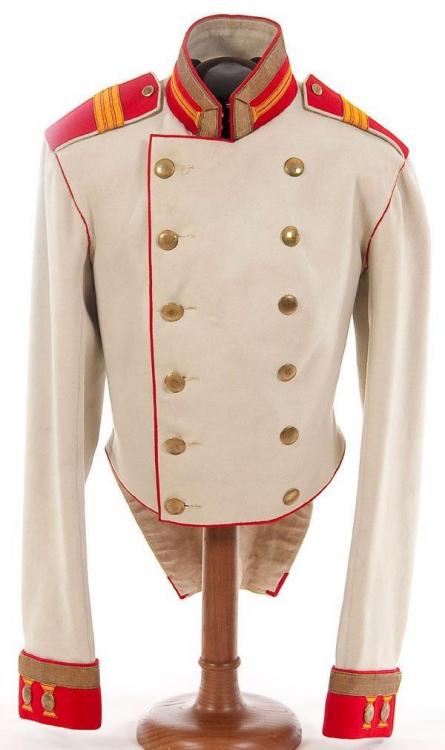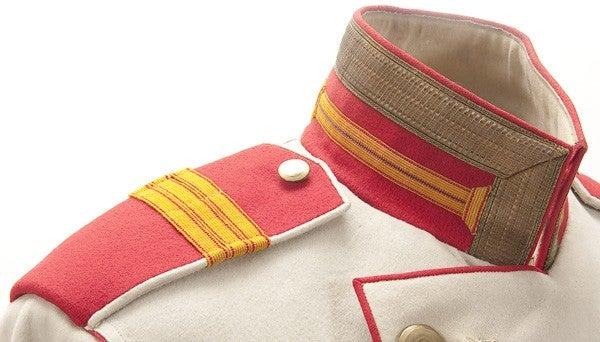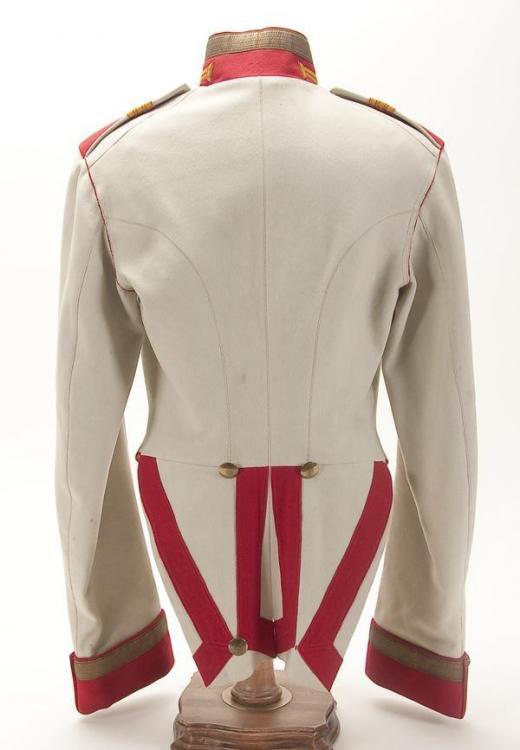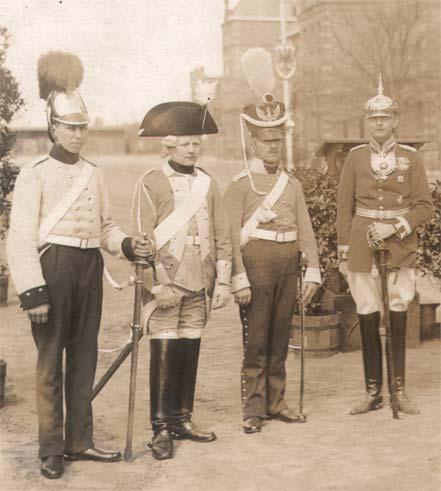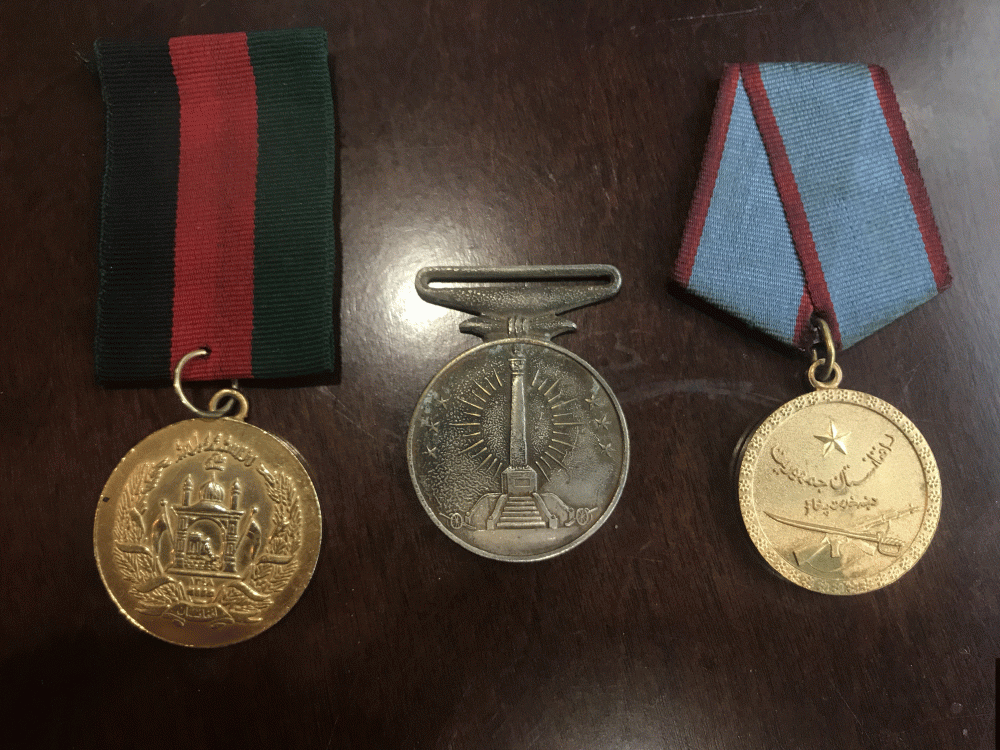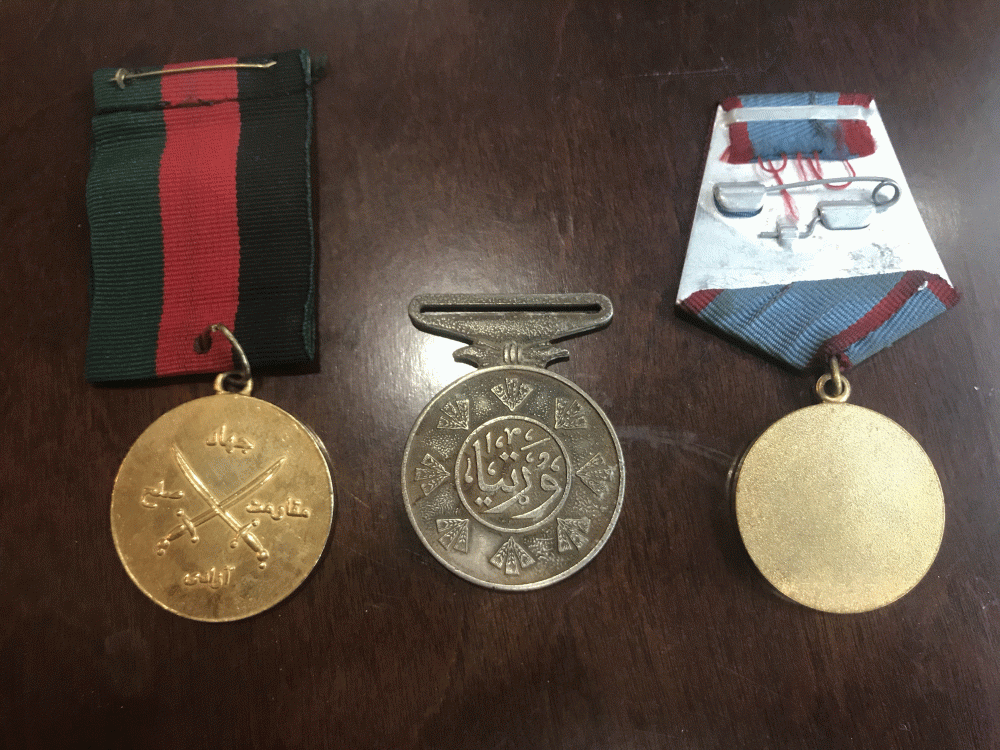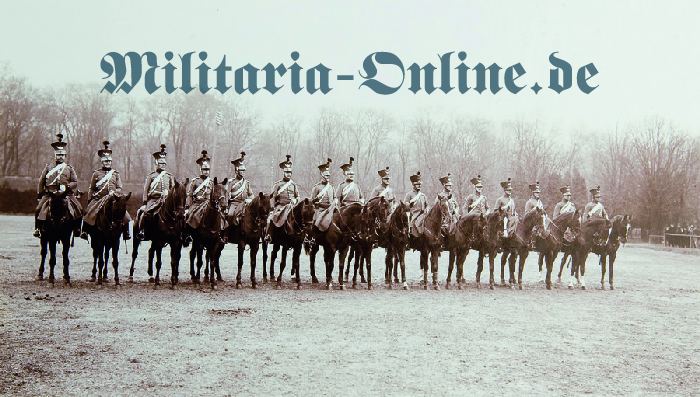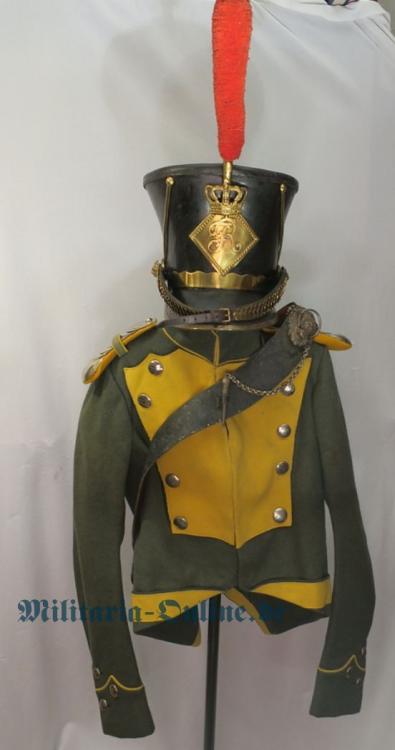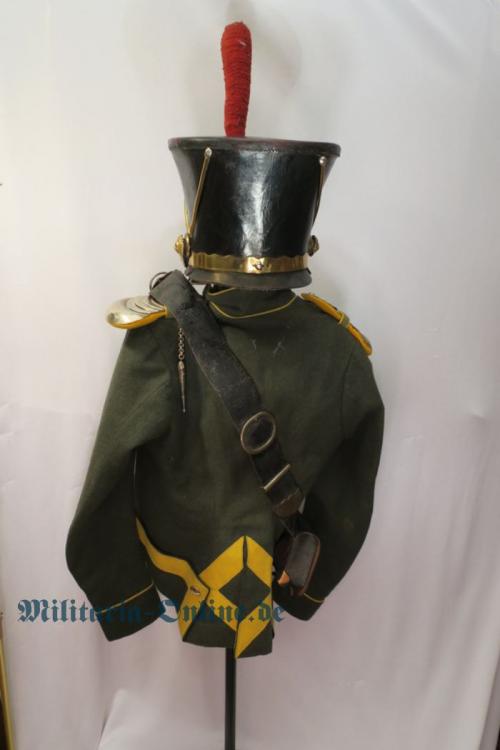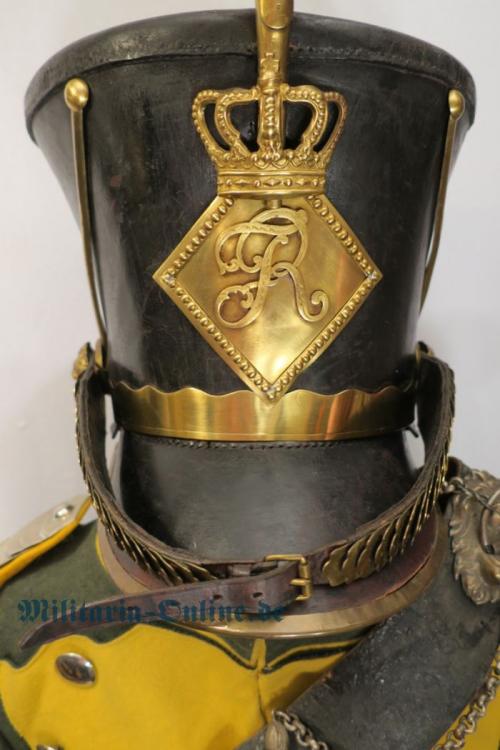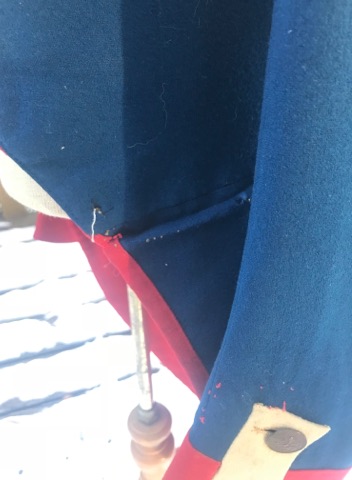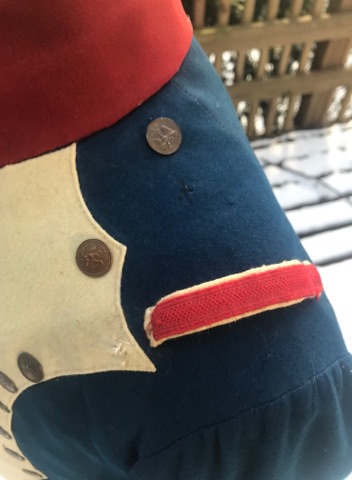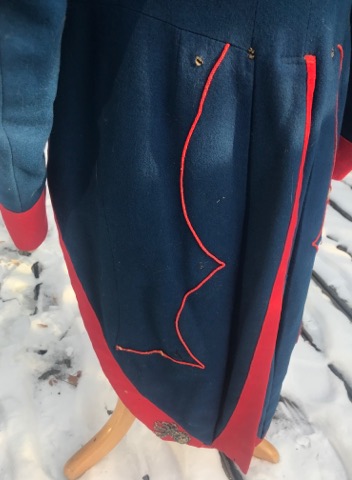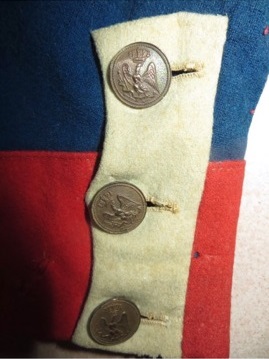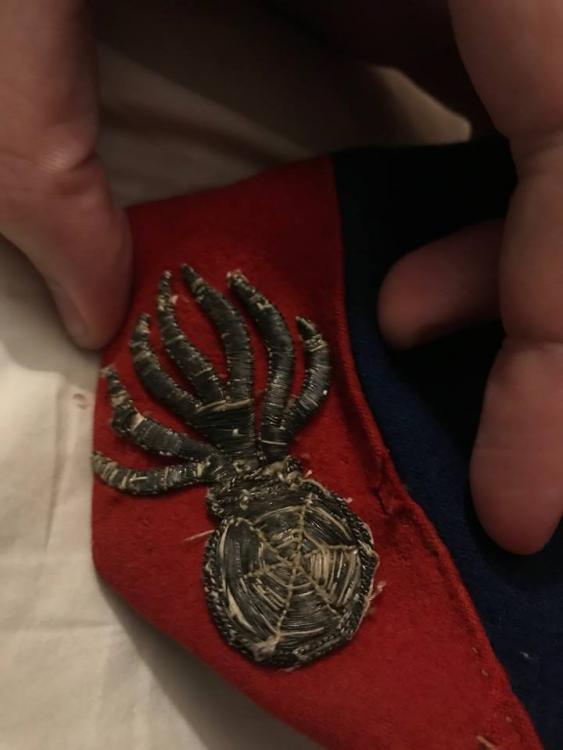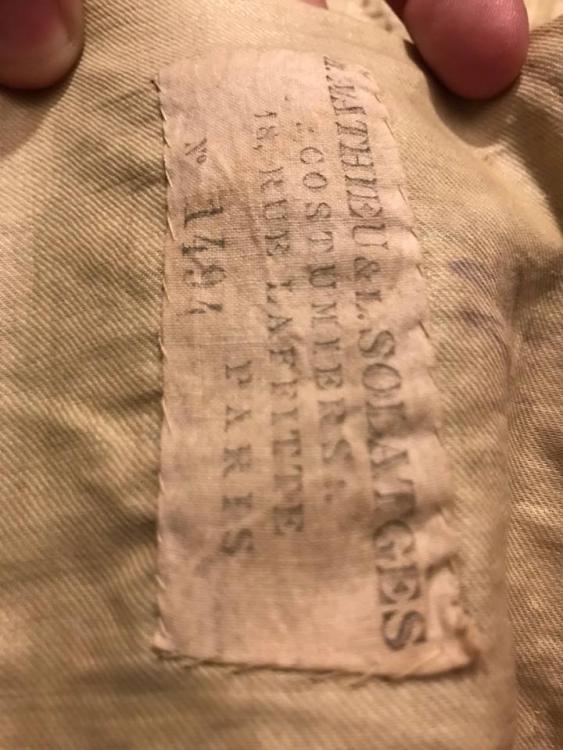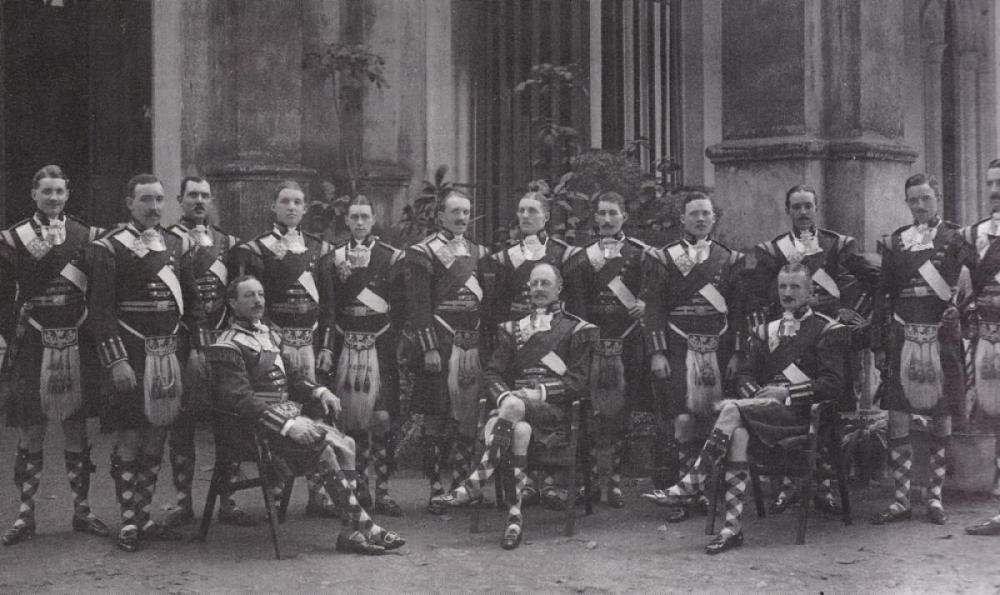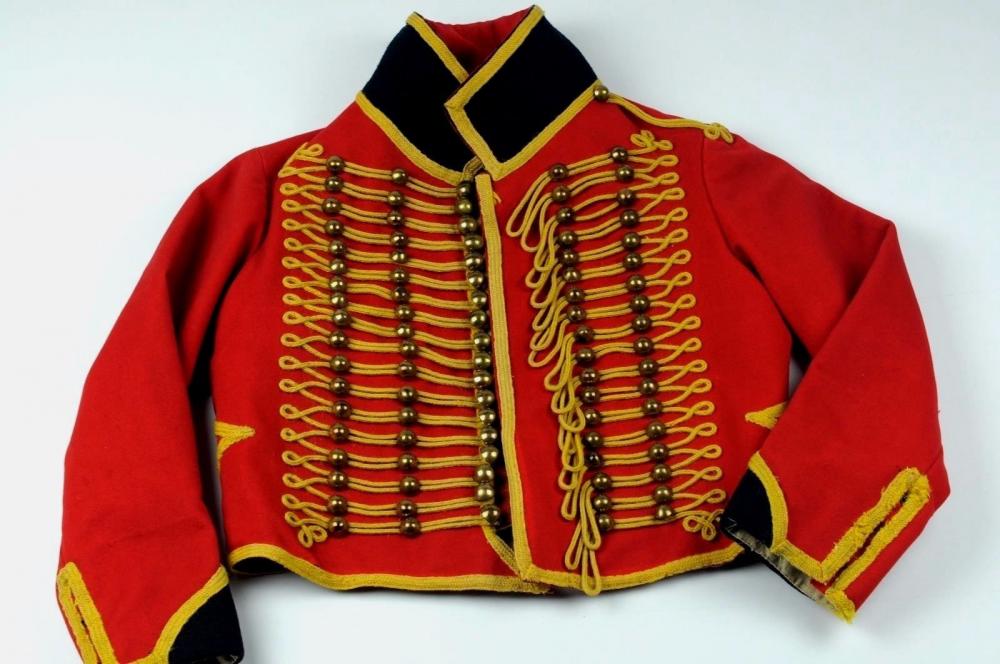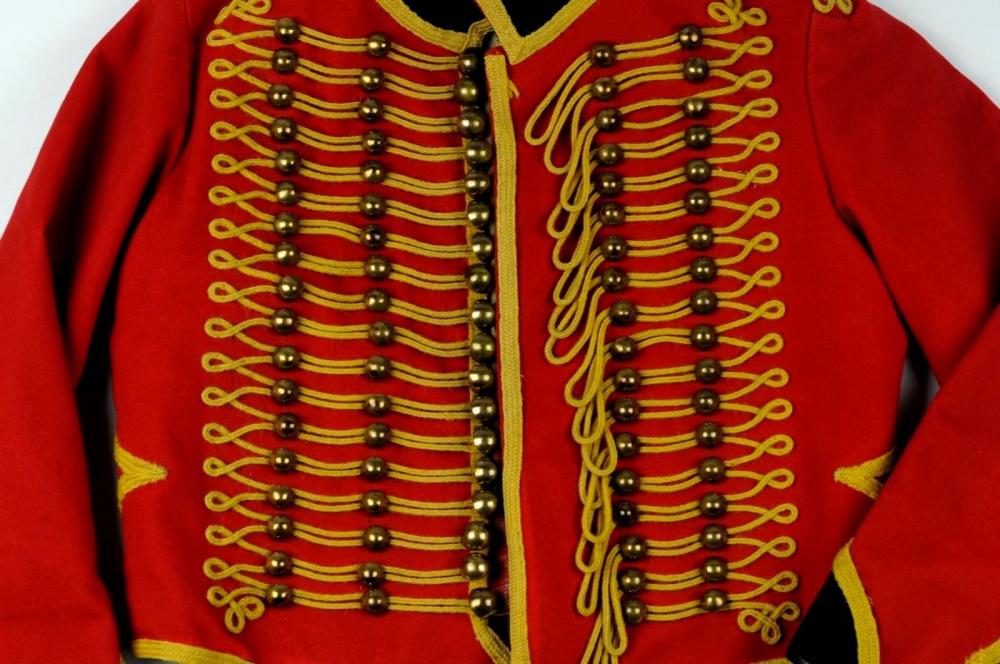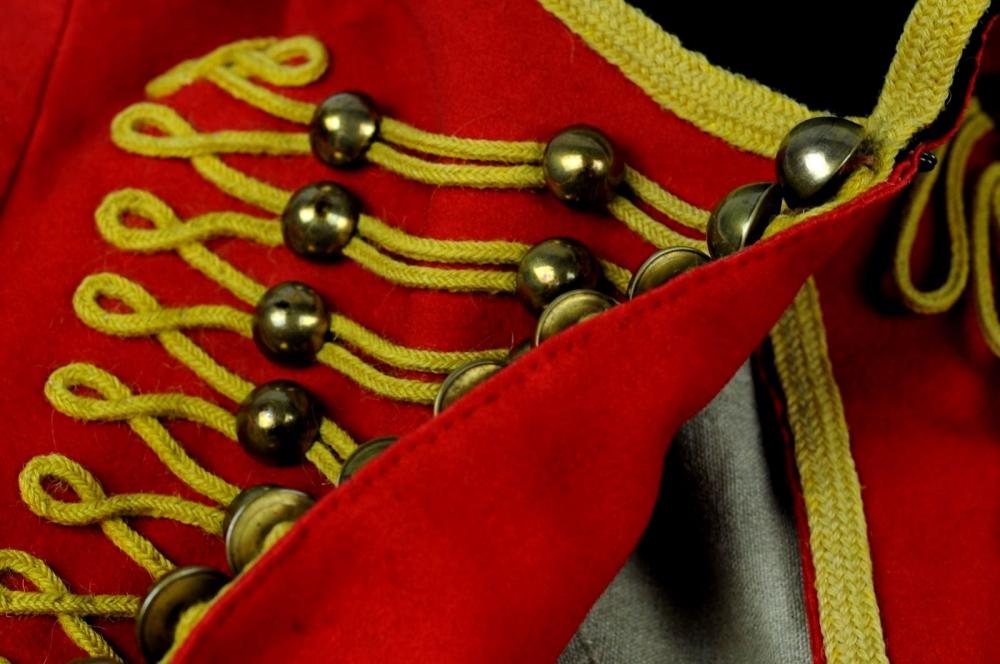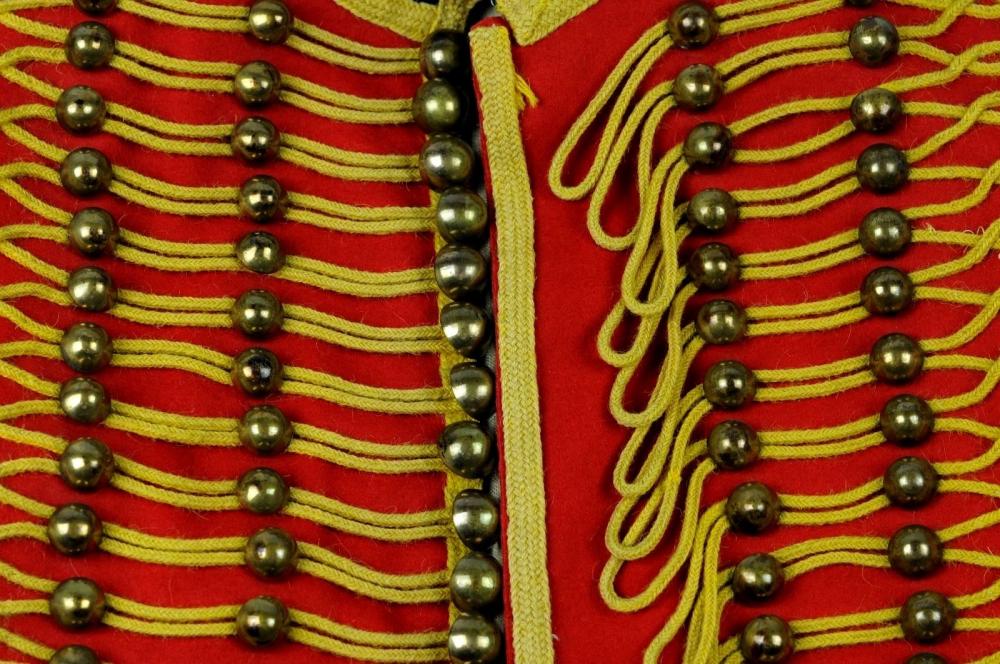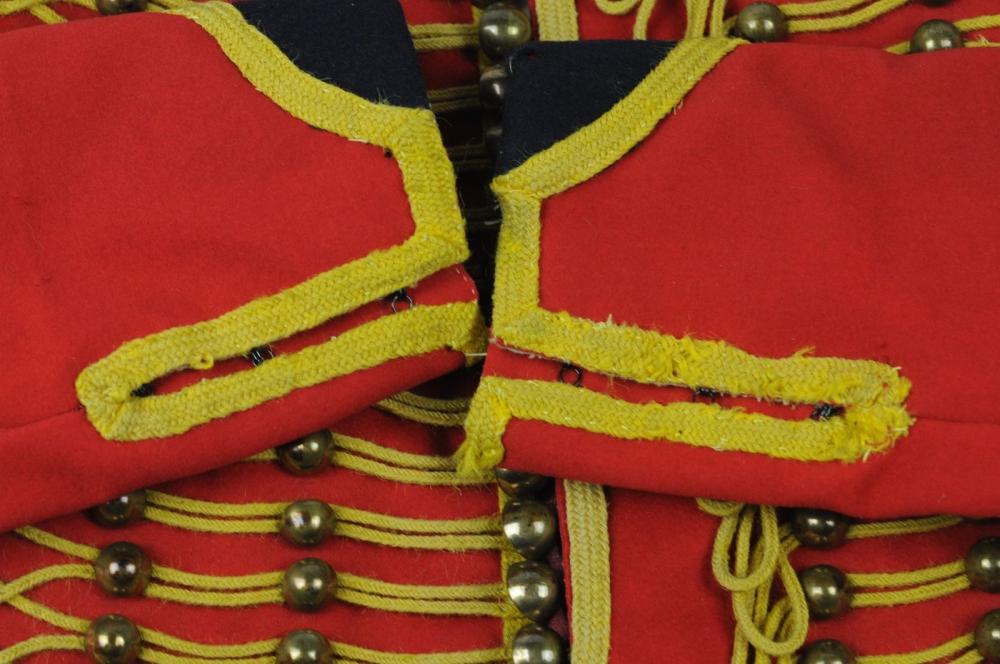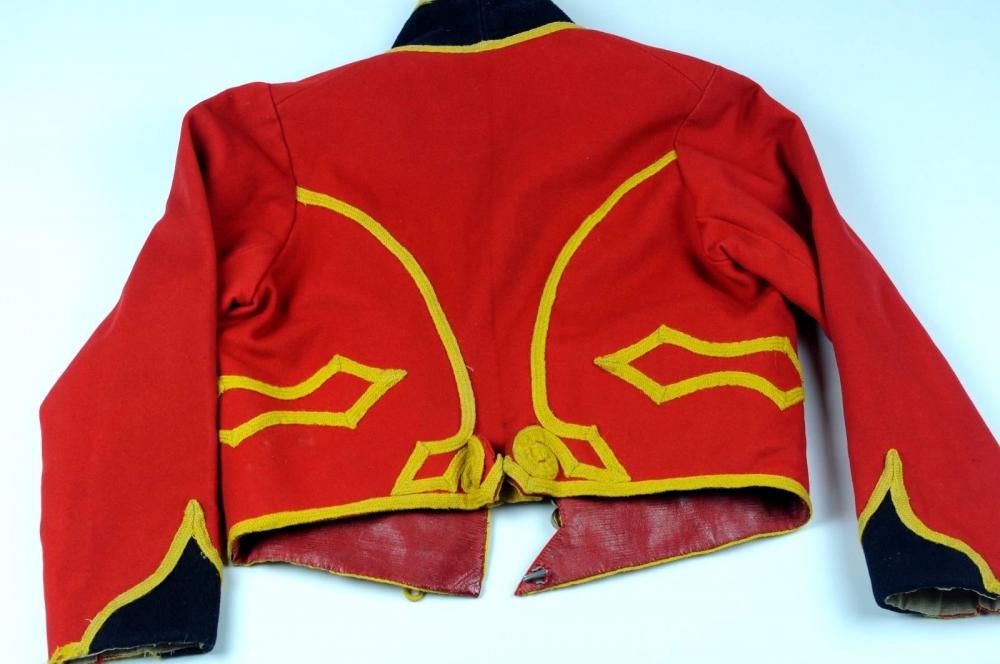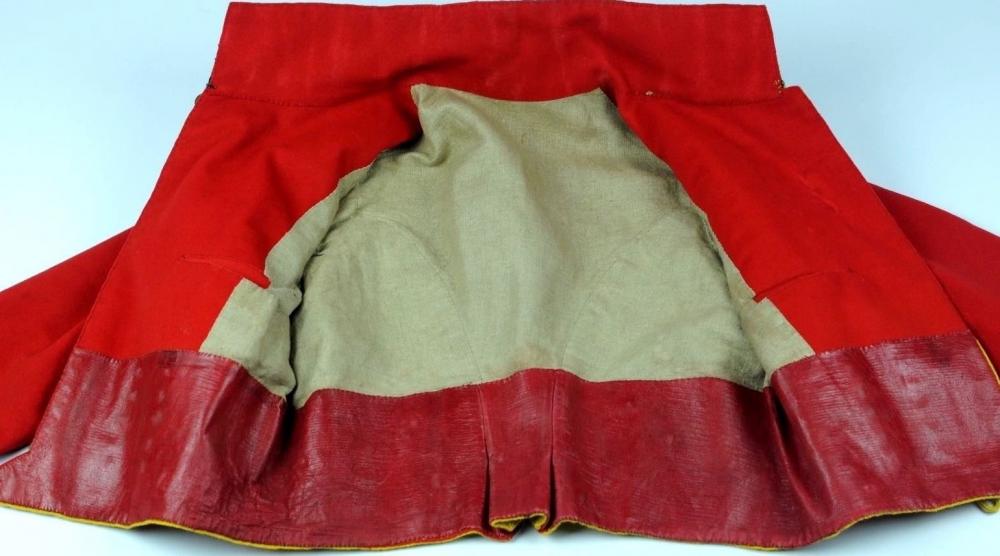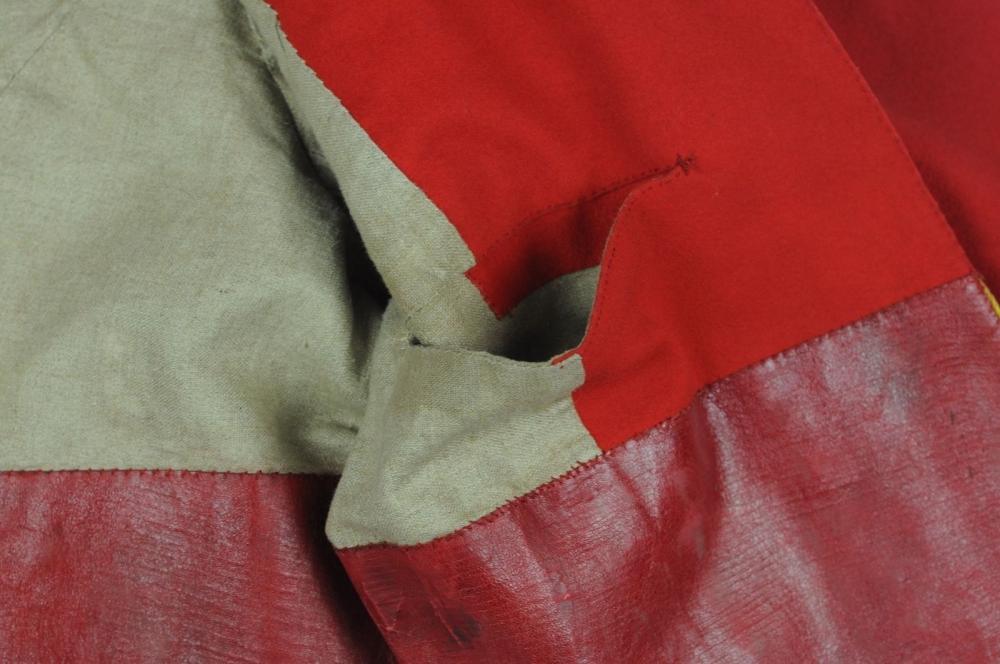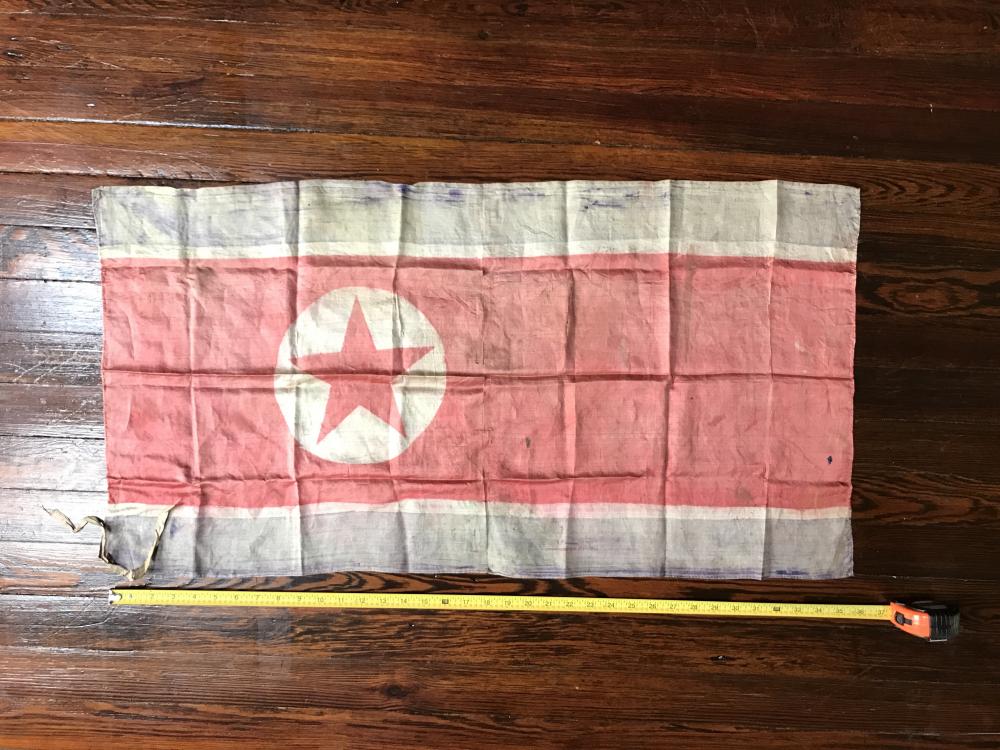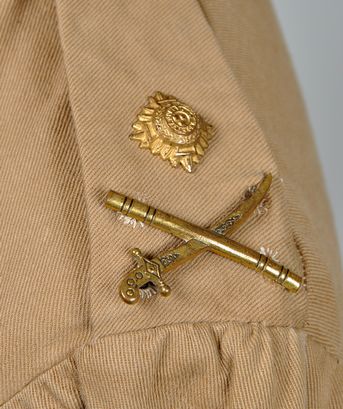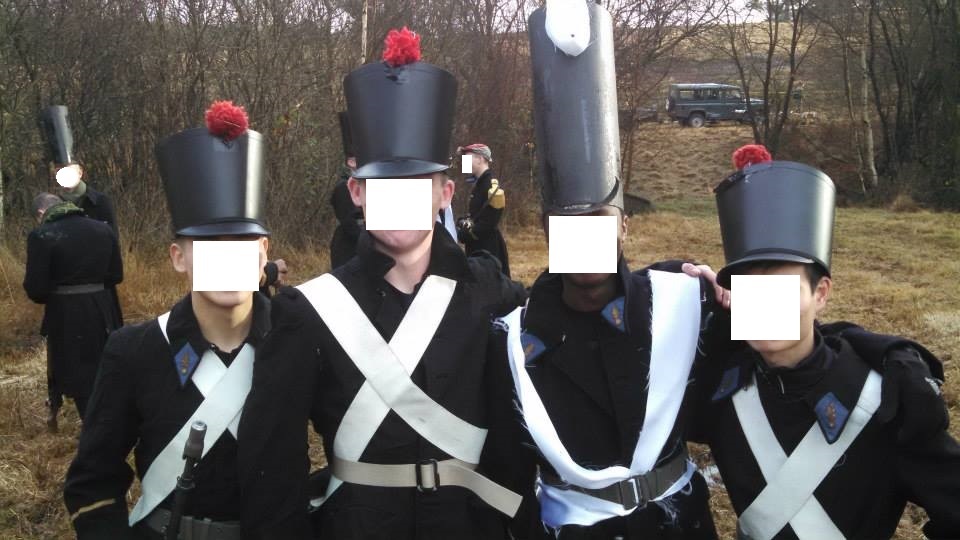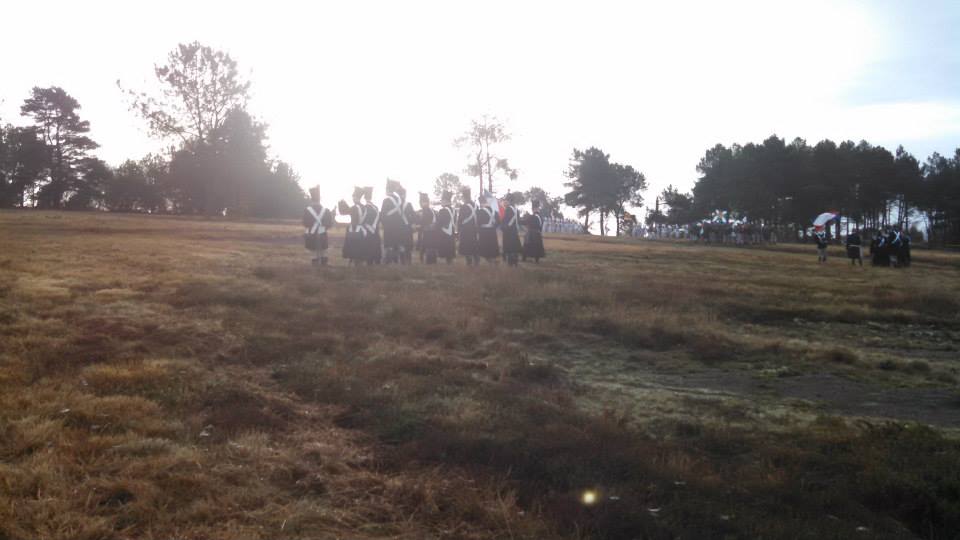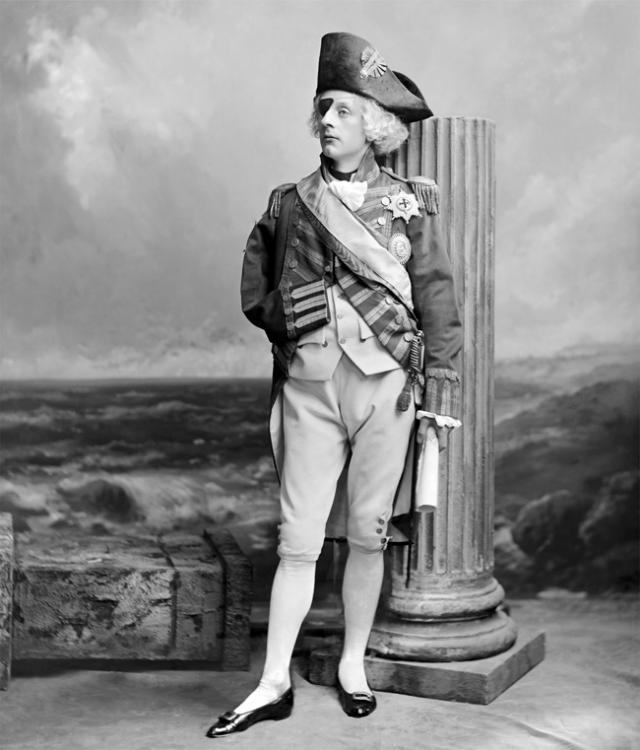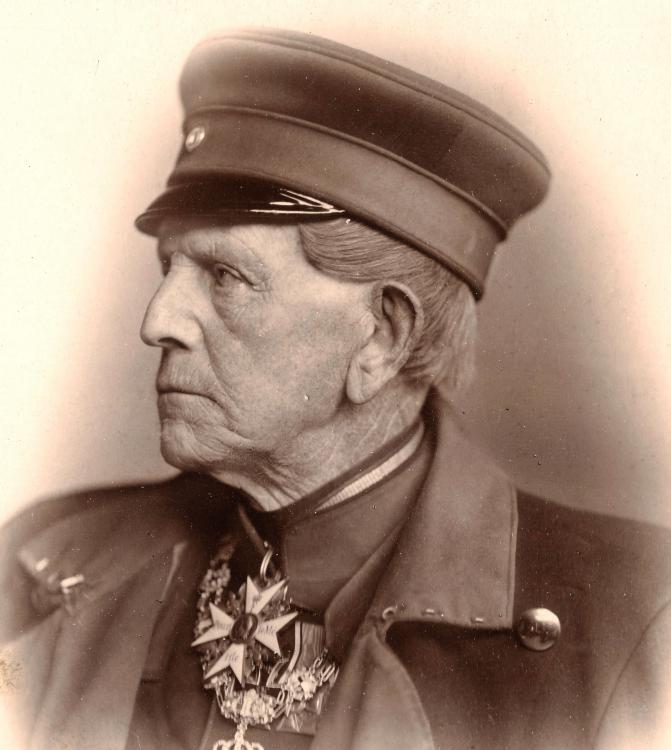-
Posts
268 -
Joined
-
Last visited
-
Days Won
1
Content Type
Profiles
Forums
Blogs
Gallery
Events
Store
Everything posted by TS Allen
-
Apparently Waterloo was recreated at the Aldershot tattoo several times. Here's a video of the 1929 tattoo that shows French forces, including Napoleon: Another image of a 1920s or 1930s recreation of Waterloo at Aldershot: (Source: https://www.shutterstock.com/editorial/image-editorial/reinactment-battle-waterloo-aldershot-tattoo-2437764a) Alamy also has images of the tattoos showing... French artillery - https://www.alamy.com/stock-photo-army-british-1930s-aldershot-searchlight-tattoo-rehearsal-a-full-dress-82297646.html?imageid=2BAE317A-876D-4C72-8E65-3D6510A6E15D&p=62486&pn=1&searchId=0099b0733daea9332c0a0222f2b4a30b&searchtype=0 British line infantry - https://www.alamy.com/stock-photo-aldershot-serrchlight-tattoo-rehearsal-dress-rehearsals-of-the-searchlight-80377971.html British cavalry - https://www.alamy.com/aldershot-tattoo-1935-the-finale-image366493753.html?imageid=C26B985F-36C1-4091-8368-62075446F3A6&p=181734&pn=1&searchId=0099b0733daea9332c0a0222f2b4a30b&searchtype=0
-
I own a helmet with this exact plate on it! I think your attribution is right, and this was worn by an Afghan horse artillery unit in Kabul. There are two helmets in Carlisle Castle which have very similar front-plates, surmounted by lion-heads, which were captured from the Amir's bodyguard in Kabul in 1878. IMG_8576.HEIC
-
Here is an interesting photo. It is from an album containing a hundred photos of the Russian Army, compiled in France in 1892. It clearly shows a soldier in a uniform from the 1812 period. The album is described in more detail at: http://riowang.blogspot.com/2012/06/russian-army.html Another Russian "1812" style uniform, identified as a turn-of-the-century copy, sold at auction in 2010. The original listing is at: https://www.liveauctioneers.com/item/8015734_84-imperial-russian-horse-guard-uniform Here is another great photo showing early copies of Napoleonic uniforms, this time "heritage" uniforms worn by members of a German cuirassier regiment. The uniform second from left is likely from the era of Frederick the Great, and the uniform on the far right is almost certainly the uniform of the regiment at the time the photo was taken, probably between 1890 and 1914. I originally found it at: http://www.kuerassierregimenter.de/ausruestung.php?set=&id=1
-
Noor, This uniform likely has the 1914-1915 Star ribbons but not the other standard Great War ribbons because the ribbons were put on between December 1918 when that medal was awarded and July 1919 when the British War Medal was awarded. The Victory Medal was not awarded until September 1919. Best, T.S.
-
Hi @eurorders, I believe that these epaulets are British, not American. The small laurel wreath on the eagle indicates the eagle is the regimental badge of the Royal North British Dragoons, also known as the Scots Greys. These epaulets likely date from 1832-1855 or so and would have been worn by officers in full dress. During this period, the Scots Greys fought in the Crimean War. The eagle badge commemorates the capture of a French regimental eagle by the Scots Greys at Waterloo some years before. The real experts on these would be the Royal Scots Dragoon Guards Museum, who maintain the regimental traditions of the Scots Greys. I encourage you to reach out to them to confirm the identity of the epaulets. They likely maintain a similar set in their collections (or wish they did!). Their website is at: https://www.scotsdgmuseum.com/ British epaulets from this period are very similar to American epaulets, and I suspect many American officers wore imported epaulets. I have examples of both American and British epaulets from the period in my collection and the construction is almost identical. The eagles on these epaulets are probably not an American colonel's rank insignia, because of the small laurel wreath which is characteristic of the Scots Greys' regimental badge. Hope this helps! T.S.
-
Thanks so much, Alexander. I sincerely appreciate the identification.
-
Hello all, Can anyone assist me with identify the three medals in the images enclosed? I acquired them all in Afghan bazaars for very modest sums. The one on the left with the tricolor ribbon was identified as a mujahideen medal associated with Ahmed Shah Massoud by the seller--who may or may not have been well-informed and honest. Thanks, T.S.A. Here are the backs
-
Here's another fascinating set! Sadly I don't think I will be able to add it to my collection but want to add it to this thread for reference. It was worn by the cavalry of Württemberg for the 1906 centenary celebrations. It is marked just like any other German military uniform from that period. Some photos of these in wear are included. According to the dealer, it includes original parts. I think the shako plate is original. I have seen an identical shako for sale in the US, but without the plate. Photos remain (c) Militaria-Online. The uniform is currently on offer at: http://www.militaria-online.de/artikelnr_3230
-
A new acquisition! For the retour des cendres (that is, the return of Napoleon's ashes from exile on St. Helena to Paris) in 1840, many veterans dressed up in old and reproduction Napoleonic uniforms to welcome Napoleon back. Thereafter veterans continued to dress up, particularly for the annual commemoration of Napoleon's death on May 5th. There is a very well-known series of photos of Napoleonic veterans dressed in what are likely reproduction uniforms in the Anne S.K. Brown military collection at Brown University which can be seen at: https://library.brown.edu/collections/askb/veterans.php. Careful observers will note that although the uniforms look Napoleonic in these ca. 1858 photos, many aspects of the uniforms such as the epaulets being worn are clearly post-1815. This coatee was an actual military coatee that dates from the July Monarchy (1830-1848), and was modified at some point to look like it dates from the First Empire. The coatee itself is made of fine light blue wool and features heavily chest padded, seamed waist (common from the 1820s onward to achieve a slim-waisted silhouette), and pockets in the tails. At some point the front of the coat was carefully cut to make it look like a First Empire coatee, and new turnbacks, cuffs, and collar were added. There is evidence that galon de grade (which look like US service stripes) were removed to make room for the new cuffs. The remaining buttons are all the smaller-sized buttons worn by the Imperial Guard and appear to be 19th century copies. All of the larger buttons from the front waist and tails were removed (perhaps those were original). Two of the four silver bullion grenades remain on the tails. Inside the tunic, there is an old costume-house label, reading from H. Mathieu and L. Solatges, Costumiers at 18, Rue Laffitte, Paris. This costume was No. 1494. I doubt this uniform was originally made for them given its construction. Then again, Mathieu and Solatges have long been the costumers for the Opéra-Comique in Paris, and one can imagine this tunic has been worn in La fille du régiment as far back as its first performance in 1840, when it premiered with a cast in First Empire coatees. Although this tunic does not perfectly copy a First Empire Imperial Guard coatee as it should have a blue collar, it is a lovely approximation and a piece of history in its own right, especially given that it may well have been worn by a veteran of Napoleon's Grande Armée. I was so pleased to acquire it for my collection. I also learned recently that the French army still wears coatees--at least, the "Grenadiers de l'Empreur" of the Republican Guard do! Like the Commander-in-Chief's Guard at the 3rd U.S. Infantry Regiment in Washington, D.C., they are serving soldiers who recreate the past.
-
The Armoury of St. James, a London-based militaria shop, currently has a lovely gorget listed... from 1912! I'll quote their description: "In 1911, 2nd Battalion, the Royal Highlanders performed a prominent role in George V’s imperial coronation durbar at Delhi, and the same year were presented with new Colours by the King. On the latter occasion the King made special reference to the battalion’s extraordinary valour in 1815 at Waterloo, where 2/42nd Royal Highlanders repulsed eleven French cavalry charges, losing 289 of its 498 officers and men. In September 1912, to mark the occasion of the King becoming Colonel-in-Chief of the regiment, the officers and sergeants of the 2nd Battalion held a special dinner at Fort William, Calcutta. For both the dinner and subsequent officers’ ball in December of the same year, the Black Watch officers wore an elaborate and specially made uniform based on the style of 1815, of which the present gorget was an integral part." The gorget is at http://www.armoury.co.uk/antiques?show=All Enclosed a photo of the officers in uniform at the 1912 dinner.
-
I think I may have found another piece that fits the theme of this thread. It conforms almost perfectly to the pattern of a First Empire hussar's dolman, although with a color scheme that does not match any particular regiment that I am aware of. It seems to have been constructed in the early to mid twentieth century, likely in France. Of note, the ca. 1913 reproduction of a dragoon tunic that I listed above also conforms to the pattern of a First Empire dragoon tunic generally but does not have the correct color combination for any particular regiment. One images that the people making these cared more for aesthetics than accuracy. Images of the dolman are enclosed. The lister from the original eBay auction has given me permission to re-post them. The original listing is still up on US eBay under item number 122446328546, but the item has sold. Sadly, I didn't win the auction. I might add that I have built up a large library of images from auctions of similar pieces, which I cannot post here as I did not secure permission to do so in most cases. That being said, if anyone is looking for images of a particular type of piece for comparison, do not hesitate to post here and message me requesting any images I may have. Best, T.S.
-
Hello all! I just acquired this 36" x 19" silk (?) North Korean flag. It is a war souvenir brought to the US around 1952 by a Marine I actually knew when I was a kid and he was enjoying his retirement in Florida. He was given it in the hospital as he was being medically evacuated from Korea after he lost of all his own souvenirs. He has now passed on, and I was given it by a mutual friend after returning from a recent, much more peaceful tour in the Republic of Korea. The flag is missing one of its ties, has several small rips where it was folded, and is severely faded. Photos are enclosed. I am aware of many similar flags which Americans brought back from Korea, including one which was supposedly taken off a destroyed North Korean tank in 1950, suggesting these may have been used for battlefield identification purposes. Whatever it is worth, it has immense sentimental value to me. I'd like to get it professional cleaned and framed behind UV-resistant glass so I can display it. Do you have any advice on the best way to do this? I was advised by a seasoned collector whose advice I general trust that cleaning it very gently in cool, purified water would not harm the silk, and that I should then keep it rolled up flat between pieces of non-acidic paper for a while once it was totally dry would get rid of the folds. However, I don't really trust myself to not damage it further. I live in Annapolis, Maryland and was thinking I might try to find a nearby specialist to clean it up. I know that George Washington University in Washington, D.C. has a program in historic preservation and was also thinking I might offer it up as a student preservation project (I once met a student from there who offered to preserve a Mahdist Sudanese jibbeh I had for free as her senior thesis! Sadly it didn't work out as I moved out of town and I lost her card). I'm open to any and all advice on conserving and displaying this piece. Also, if anyone has any Korean People's Army or Chinese Volunteer items of their own, please feel free to reach out. I am interested in acquiring more. Thanks so much! Best, T.S. Allen
-
This past weekend I was in Tokyo catching up with friends and I was lucky to be able to visit Jimboucho Gunsouten (Gunsouten literally means "military uniform store") in the Jimboucho neighborhood in Tokyo. It is without question the greatest single mass of antique Japanese military uniforms out there and I was lucky to be able to visit. The store generally opens by appointment only, and I emailed the address on their website about a week out with the list of items I was interested in and asking for to visit. Hama, the owner's very helpful English-speaking assistant, emailed me back in English and we agreed to a Sunday morning visit. The store is not far from the subway station although I was only able to find it with the help of a barista, and then some street-sweepers directing me (navigating Japanese cities is notoriously hard as there are no Western-style street addresses). When I arrived, tragically, Hama said the shop's owner was ill, so it would be impossible for us to negotiate prices or for me to actually purchase anything. However, she was kind enough to show me around for a little bit, let me take some photos, and promised to follow-up by email regarding the items I was looking for. They can accept payment from abroad and ship internationally, according to Hama, although they don't list their stock online. I only snapped a few photos, and they aren't very good, but they're enclosed to give you an idea of the scale of their stock. There must have been hundreds of uniforms, dating from the Meiji period onwards. I personally was able to take a look at about half a dozen uniforms of the Model of 1886, most of which were in remarkably good condition. Apparently, most of the earlier stuff is kept in a warehouse at another location. Hama said the store is going to move into another, bigger location soon and they will finally have all their stock on hand. I can only imagine how much they must have there. I did not pay very close attention to the stock of Taisho and Showa-period items, but it seemed like they had every piece of uniform or equipment you could want. They also had quite a few medals. For more information, I recommend their English-language website at http://www.jimboucho-gunsouten.com/english.html. Best, T.S.
-
Hugh, Thanks for the information. I think I have all the puzzle pieces now. I've given some thought to the final ribbon and decided it is almost certainly the Order of the Crown of Italy. Sir Ernest Shackleton's ribbons, which were mounted around the same time, have a ribbon that looks about the same from that decoration (ref http://www.christies.com/features/From-the-Land-of-the-Mist-and-Snow-Sir-Ernest-Shackletons-medals-6483-1.aspx). Now time to slowly work through the Army List for the second quarter of 1919 (http://deriv.nls.uk/dcn23/8809/88091116.23.pdf) and see who fits the puzzle! More soon, I hope! Best, T.S.
-
Hello GMIC, I recently acquired a lovely WWI-era Major-General's lightweight summer or tropical tunic. Photos are enclosed. I'm hoping to identify its original owner. The thing that's given me trouble is the ribbon bar, which would be the key to identifying who this belonged to. So far, this is what I've figured out: Ribbon 1: Either Victoria Cross or Order of the Bath. Ribbon 2: Order of St. Michael and St. George? Ribbon 3: Queen's South Africa Medal Ribbon 4: 1914-1915 Star Ribbon 5: Unknown. Looks like the Order of the Crown of Italy? It's curious that there is no British War Medal or Victory Medal here. This suggests to me that the tunic was last in wear in between the introduction of the 1914-1915 Star in December of 1918 and the introduction of the War Medal in July of 1919, a relatively short period, although please let me know if I'm wrong to think that. I was not able to find the Army List for the first quarter of 1919 online anywhere, unfortunately, but if anyone knows where to find a version that is searchable by text (rather than by name) please advise. Although the combination of VC/GCB/KCB/CB, GCMG/DCMG/CMG and his campaign medals is probably not terribly unique, I am hopeful I will be able to identify him thanks to the unusual (foreign?) decoration at the end of his bar. Can anyone assist me in figuring out what the ribbons are exactly and who wore them? Thanks so much, T.S.A.
-
These reproductions aren't "early" but they are unique, so I thought I'd share. The enclosed photos are from St. Cyr's annual food fight recreating the Battle of Austerlitz. They have been kindly sent along by a friend of mine. It seems that they are wearing cadet overcoats along with very rough approximations of First Empire shakos and crossbelts. Unfortunately, I was not able to get any photos of the "Austrian" or "Prussian" armies. I wonder how long this tradition has been going on? These photos date from 2013.
-
Thanks for sharing, Hermann. These are wonderful.
-
UPDATE: I have not been able to turn up anything on the 1913 centenary commemoration of the Battle of Leipzig that the pennant showcased above may have been from. The fine folks at the Missouri History Museum & Library and the St. Louis Public Library have kindly scoured their archives for me, and turned up absolutely nothing. It is possible the event was very small and simply disappeared from the archives (I suspect without any evidence that these pennants were rather like T shirts today and could have been produced for a very small event). I am actively seeking further information on the event the pennant may have been used at, so please post here or reach out to me directly if you have any. Best, T.S.
-
Here's another great one: The Hon William Reginald Wentworth Fitzwilliam dressed as Lord Nelson for the Duchess of Devonshire's [Famous] Ball, 1897. More info at http://www.rvondeh.dircon.co.uk/incalmprose/. Much to my surprise, no one dressed up as Napoleon. Too raw in France and too impolitic in England at the time, perhaps. A military colleague has also recently sent along photos of the St Cyrien cadets' annual recreation of Austerlitz. Not "early" reproductions but quite amusing. I will seek permission to post them.
-
Odful, wonderful images! Do you have any history associated with them? They look Victorian to me. I must note, also, that many if not most of the surviving 19th century French reproductions I have seen are of extremely high quality. That is why so many of them fool collectors and transmute into original pieces.
-
First up, a German reproduction of a First Empire Imperial Guard Dragoon's coat from about 1913. I purchased this piece from Helmuth Weitze, who I believe accurately identified it as having been made for the 1913 celebration of the centenary of the Battle of Leipzig. This tunic has standard post-1895 Prussian Army buttons and snaps and hooks which are identical to other early twentieth century German dress uniforms. I am still seeking more information on these ceremonies, as I have no evidence that there was a military contingent at the unveiling of the Monument to the Battle of Nations in 1913. The Kaiser had a lukewarm attitude to the ceremony because of the problematic nationalistic narrative of the "War of Liberation." Next, a related commemorative sports pennant from the 1913 celebration of the centenary of the Battle of Leipzig in St. Louis, Missouri. Although St. Louis had originally been named after King Louis XVIII of France and had briefly been part of Napoleon's Empire before being ceded to the United States as part of the Louisiana Purchase of 1803, by 1913 it had a large German population. Athletes in St. Louis, I believe from the German "Turner" gymnastics movement, which had a chapter there, participated in the international Germanic celebrations that coincided with the centenary in 1913. This pennant would have been used by onlookers cheering them on. Next, a nineteenth-century French reproduction of a French infantryman's bonnet de police. These were widely reproduced in France and the earliest pieces were sometimes worn by veterans. The only photographic series of Napoleonic veterans, taken ca. 1858, show that a mix of original and reproduction uniforms and equipment were worn by veterans in the annual 5 May parade up the Place Vendôme in Paris. You can see these photos, which are preserved in the Anne S.K. Browne military collection, at http://mashable.com/2014/10/27/napoleonic-wars-veterans/#xPbUuprY5kqj, the sharp observer will note that while most of the items worn by the veterans are original issued items, many of the miscellaneous items such as shoulder boards are Second Empire pattern, and I suspect at least some of the uniforms would have been made up new for this important ceremony. And finally, another nineteenth century French reproduction, this time of a bonnet of the Imperial Guard Dragoons.
-
Hey folks, I have been thinking about the economics of collecting a lot lately, so I thought I'd chip in my thoughts. Several months ago, I decided to sell off the majority of my collection within the next year, keeping all of my most prized items but eliminating all the pieces that did not fit with my current collecting tastes. There were several reasons for this. The clearest reason was that I will almost unquestionably earn higher long-term returns, and assume lower risk, by investing the money I make from the sale of that part of my collection along with the rest of my portfolio, rather than keeping the material in my collection, insuring it, and hoping its value increases. It was also a very good time for me to sell. I was living in the United Kingdom where the parts of my collection I was no longer interested in were more valuable, and found an excellent local dealer in London to handle the high-end items and an auction house to handle the rest. Finally, since I am a junior Army officer who was living in the UK in September, is currently on extended temporary duty in the US, and is moving to Asia in a few months, I decided that I was better off without an bulky personal goods shipment following me around. It would be interesting to think through the ramifications of the decline of the "Baby Boomers" on the prices of WWII militaria. I think in the long run those prices will decline. Best, T.S.
-
Hi folks, For more than a century after Napoleon's defeat at Waterloo, the wars which Napoleon caused during his long reign were known as "the Great War." No other European campaign ever captured the imagination of the professions of arms in the same way the Napoleonic Wars did, and if they were tragic, they were also colorful and glorious. I have always been fascinated by this memory. My favorite painting is Édouard Detaille's Le Rêve, portraying a sleeping French Army's dreams of Napoleonic glory, and Alfred de Vigny's Servitude et grandeur militaries is one of my favorite books. In the past year I have also had the opportunity to acquire several early Napoleonic "reproductions" associated with the rampant memorialization of the original Great War. I will be showcasing them in follow-on posts. Does anyone else have any early Napoleonic reproductions they'd like to share? The most common pieces seem to be headgear, and Bertrand Malvaux and other French dealers regularly offer nineteenth-century reproductions of Napoleonic shakos and helmets for sale. I have also seen a handful of other uniforms for sale. I am terribly jealous of whoever won a the German reproduction of a Napoleonic French infantry uniform, likely made for the 1913 centenary of the Battle of Nations, that was on eBay last year! Best, T.S. *The modern memory of the nineteenth century as the time of the "Wars of Empire" is relatively new. Our obsession with colonial campaigns would have been alien to nineteenth century soldiers, who were far more interested in the American Civil War, the wars of Second Empire France, the German Wars of Unification and Russia's campaigns than any skirmishes in Africa or India. Luvaas, Holden Reid etc. make this point in their academic works, but the best explanation comes from George MacDonald's Fraser's Sir Harry Flashman, who once had to remind George Armstrong Custer that as of 1876 the US Army had fought and won the largest war since the Congress of Vienna.
-
Hello friends! Since it now is my profile picture, I thought I would share some more photos and details of the pride of my Napoleonic collection--a First Empire chapeau, of the pattern worn by the Imperial Guard. Napoleon’s officers wore these on all formal occasions, and senior officers (including le petite corporal himself) wore them in camp and field. This chapeau is constructed of beaver skin and features an officer’s metallic cockade, gilded bullion ornamentation, and a regulation Imperial Guard officer’s gilded brass button. The ornamentation is correct for high-ranking officers of Napoleon’s Imperial Guard, most likely a senior colonel or staff officer. (General officers usually wore a plume of black ostrich feathers.) The chapeau retains the original black leather sweatband and the original silk liner. A printed paper milliner’s label from “E. Degoy,” located at Rue de Bac, No. 8 in Rouen, is affixed to the crown of the liner. Rouen was home to many of France’s largest textile manufactures during the First Empire. Condition: The condition is typical for relics from this period. The material of the chapeau is brittle but stable, as is the leather liner. The leather liner is slightly loose. There is moderate damage to each of the tips of the chapeau which has been carefully repaired and slight deformation to the left rear. There is also a roughly two-inch cut in the top rear. Provenance: I acquired this from dealer Stephan Joan in May 2012 (the photos are his; he said at the time I should feel free to save them and make use of them). If you are interested in the information I have collected on the valuation of such caps based on looking at auctions and sales since 2000, please PM me.
-
Hello all, I generally do not collect German militaria, but I have always been fascinated by the Wars of Unification, and when I recently saw a Model 1867 Schirmmütze for sale on eBay I threw in a bid. Much to my surprise I won it, and at somewhat below my max bid. It's item 371301751963 if you are curious. It is named to a "Frhr. V. Pöllnitz." German Wikipedia (ref. http://de.wikipedia.org/wiki/Pölnitz_(Adelsgeschlecht)) says a Cabinet Order of 4 April 1885 changed the spelling of the name to "Pölnitz," which means this cap must date to between 1867 and 1885, and given its style, I think on the earlier end of that frame. I imagine if I can identify which Pollnitz owned this cap, and when he inherited his title, I could date it more specifically. The auction claimed he served as a Major in the 72nd Infantry Regiment and was from the Thür region of Germany. Can anyone recommend what I would need to do in order to hunt down more information on this Pöllnitz? Does anyone have any more information on this type of cap? Anyone have any others to share? Also enclosed are snaps from the auction. Happy to provide more if there is interest when the item is in hand. The image of von Moltke is in the public domain. I am trying to figure out how to display this along with my favorite Vanity Fair print of Moltke (captioned "modern strategy"), some period binos and beautiful Kreigskarte I have, which some poor orderly spent ages cutting up and pasting on linen backing (sadly for it shows exercise grounds in South Germany--but who can tell?). Best, T.S.A.


